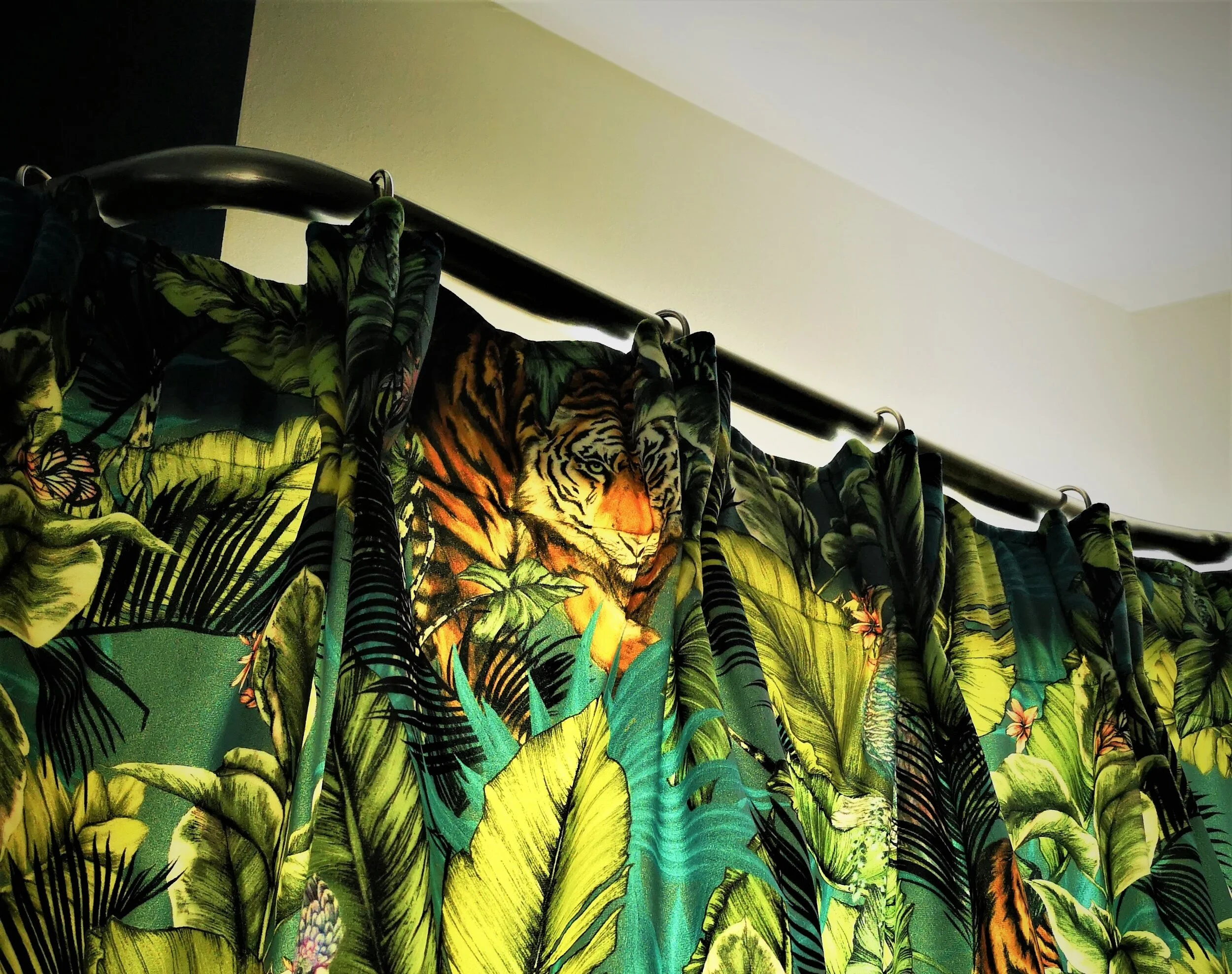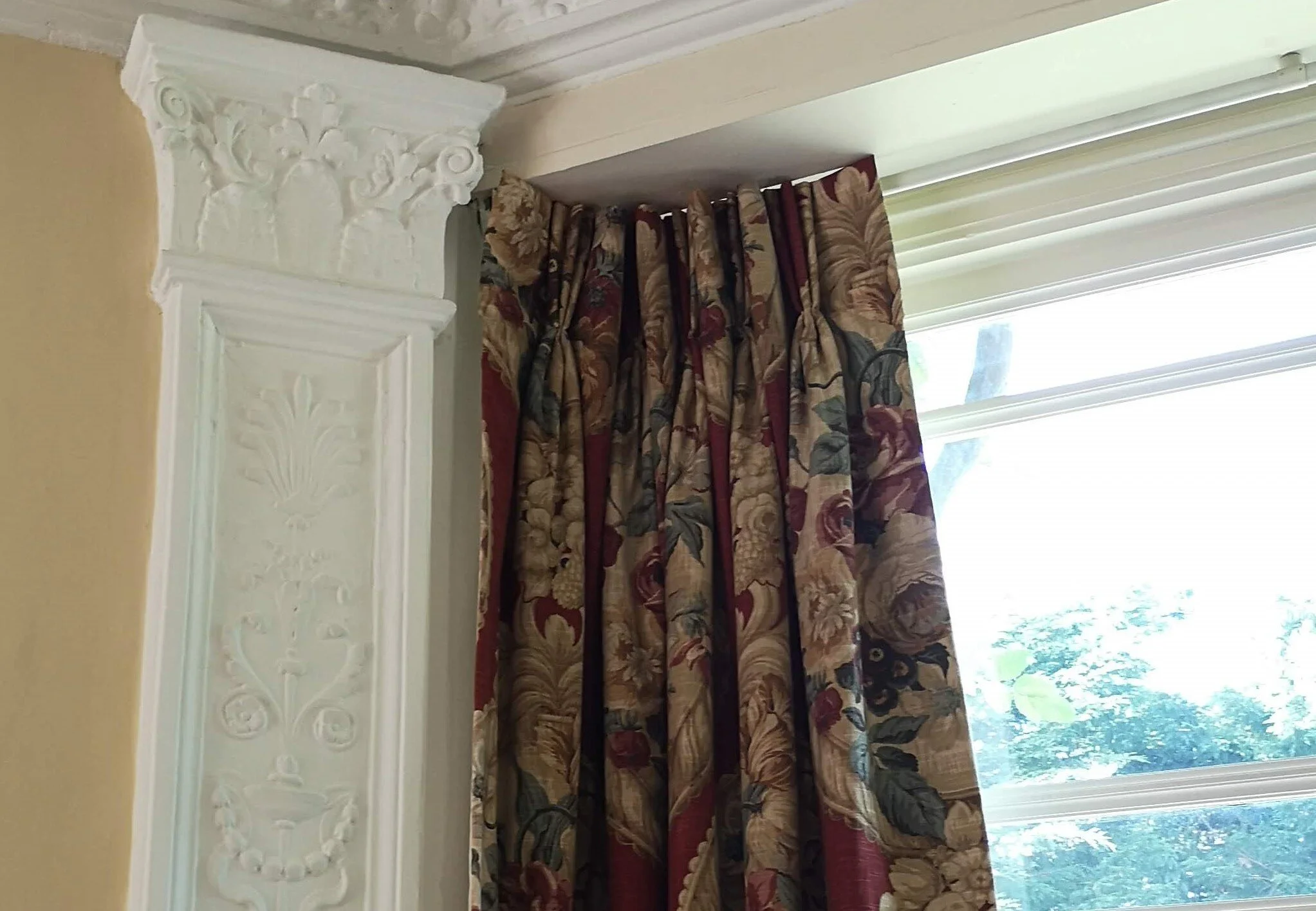
Handmade Curtains in Suffolk: Beautiful, Custom Curtains for Every Home
Are you looking for high-quality, handmade curtains in Suffolk?
Whether you're updating your home decor or need a unique design to suit a specific space, our custom curtain services are tailored to fit your needs. Based in Suffolk and serving nearby areas, we create made-to-order curtains that bring warmth, style, and functionality to any room. Clients are across all of Suffolk, including Beccles, Bungay, Southwold, Diss, Stowmarket, Reydon, Halesworth, Aldeburgh, Woodbridge, Walberswick, and Dedham, plus Norfolk and surrounding areas.
“Our curtains are just fabulous! So pleased with the results, we chose Emma Claire Interiors to create our new Roman blinds too”
Whats the best way to hang a curtain?
It depends. Curtains can be suspended using either a pole or a track system.
Poles
Usually made from either wood or metal, poles are much more pleasing on the eye. They come in a huge wide variety of finishes and styles too, set off by matching finials (end-pieces) and brackets (wall attachments).
Tracks
Tracks tend to be more functional than decorative. if needed, they can be concealed with an attractive valance or pelmet.
How you choose to suspend your curtain will depend on your personal design preferences, your chosen fabric, how the curtain is used and where it’s located in your property.
What different types of hanging styles and curtain header can I choose from?
At the top of every curtain, you’ll find the “header”, which is how the material is connected the pole or track, and also determines exactly how your new curtains will hang.
Eyelet. These curtains are suspended using a pole, which runs directly through metal rings (eyelets) in your fabric, forming large pronounced columns and clean folds. Eyelet curtains are extremely popular, offering a stylish, contemporary look combined with an easy, smooth functionality.
Pencil Pleat. These curtains have a much more traditional feel, forming small tights fold at the header that look like a line of pencils. Well suited to classic interior design styles and older properties, pencil pleats can be suspended from either tracks or poles.
Pinch Pleat. Highly-decorative, tailored curtains with permanent ‘pinches’ at the header, creating classic elegant folds from top to bottom. Great for bedrooms, dining rooms and living rooms.
Goblet Pleat. Similar to pinch pleat, these curtains create a ‘goblet’ or ‘wineglass’ look at the header, creating a modern, elegant and refined look. Can be suspended from either a track or pole.
Rod-Pocket. Sometimes known as pole top or casement curtains, rod-pocket curtains have a discreet casing sewn into the back of the fabric at the header, allowing the curtain pole to slip through unseen. The panels bunch together for a soft look with clean lines.
Tab-Top. Suspended on a pole, tab-top curtains use panels or fabrics loops to attach at the header. They work great as a complement to Roman blinds.
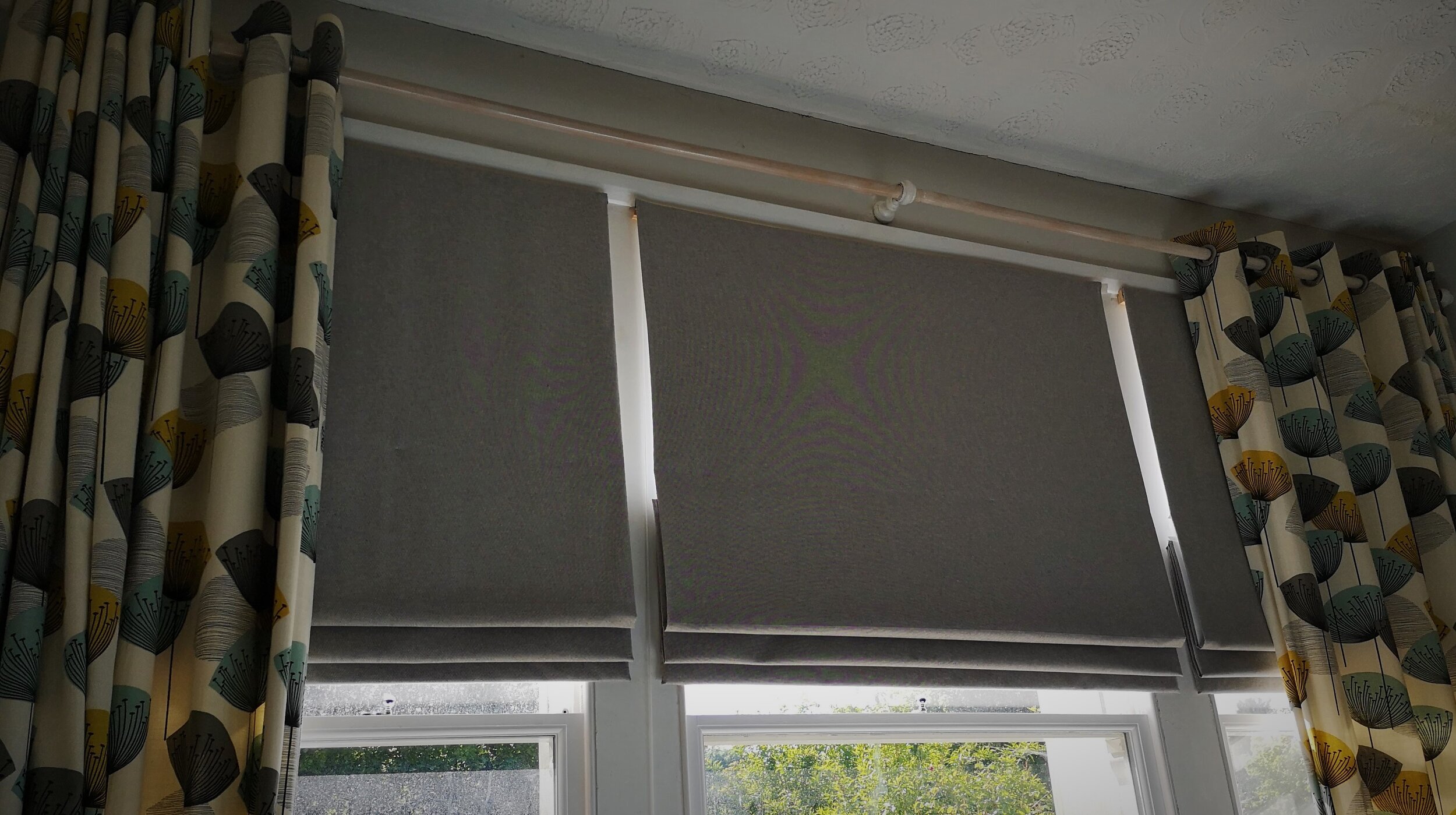
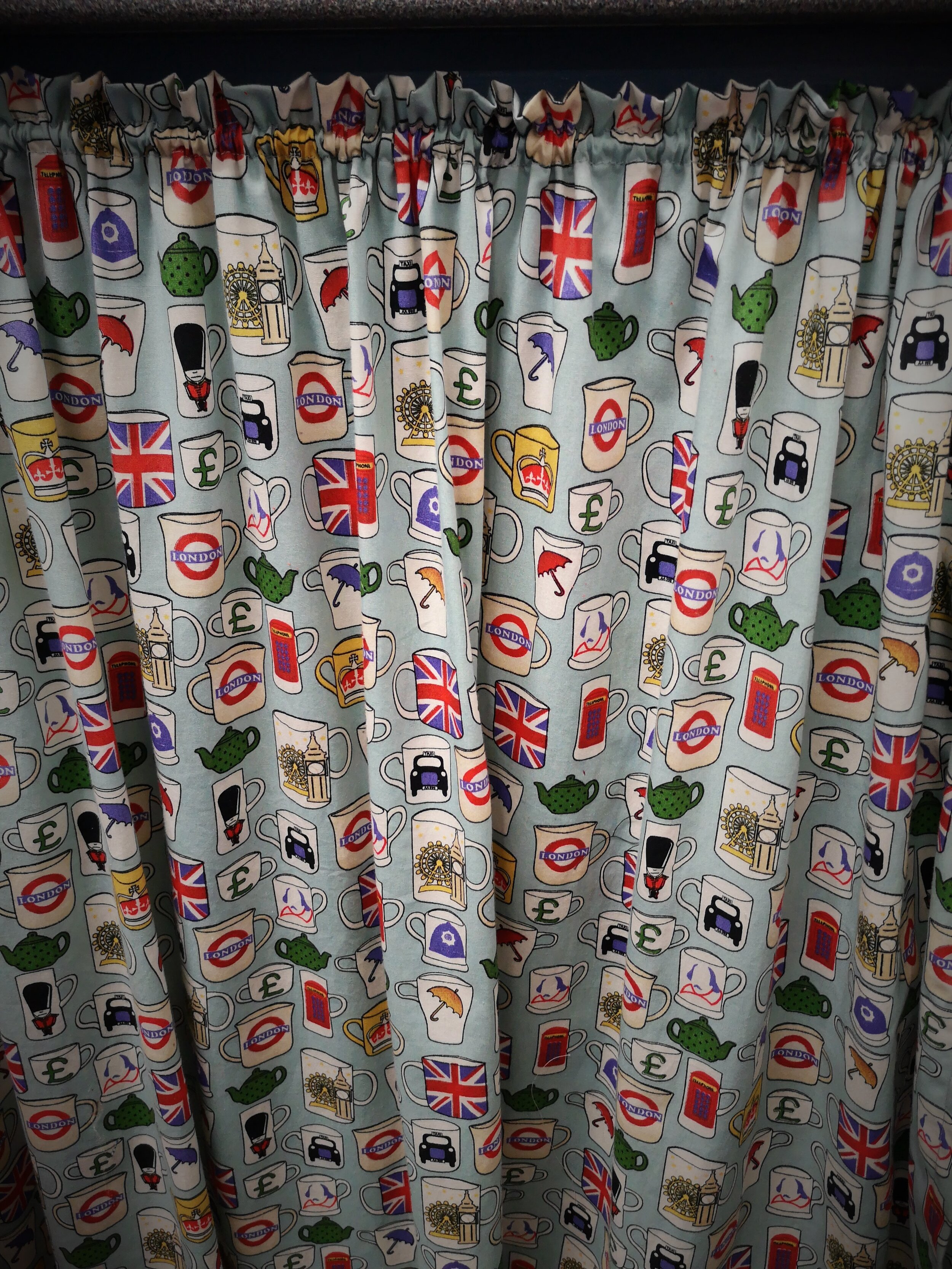
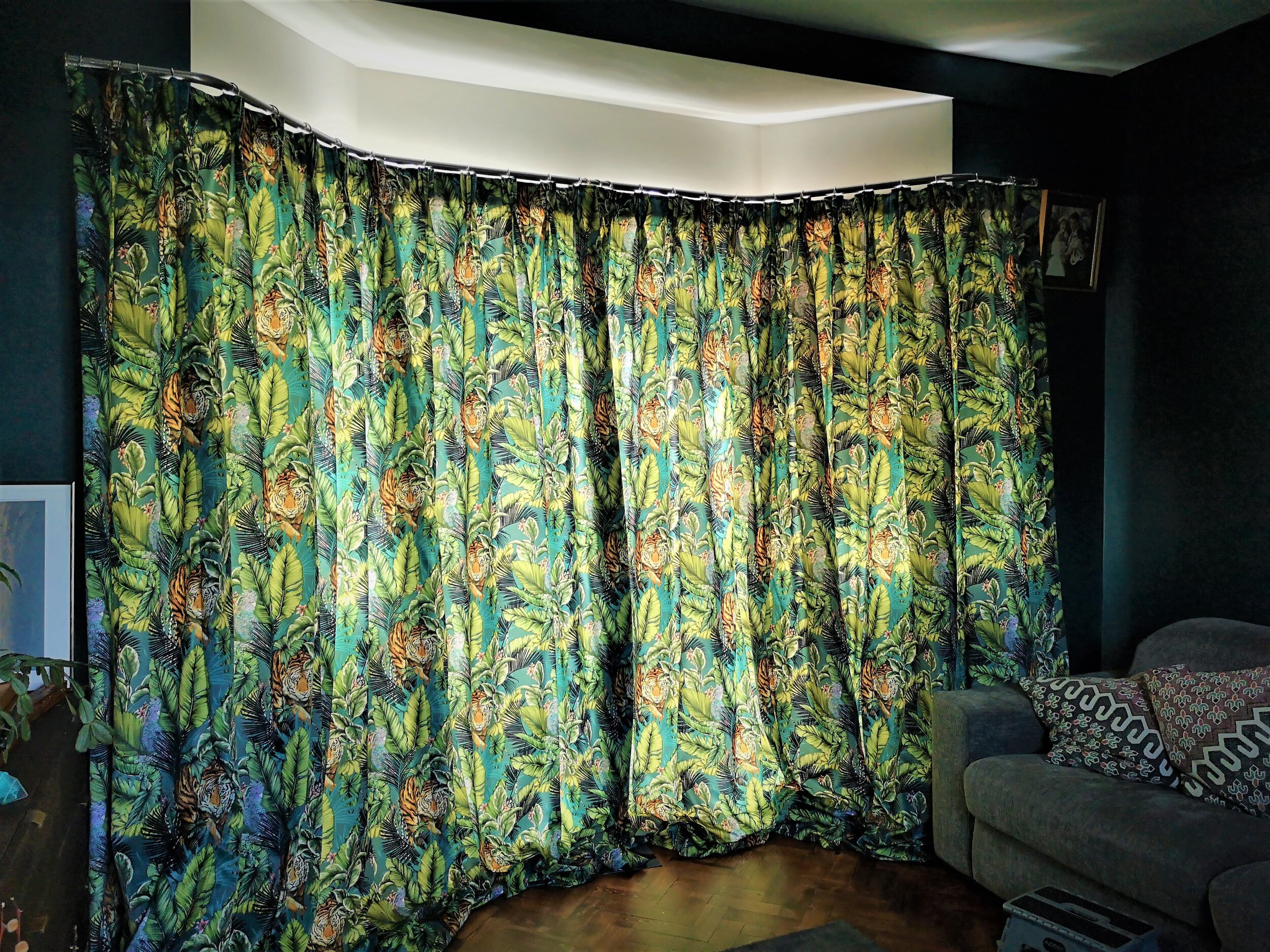









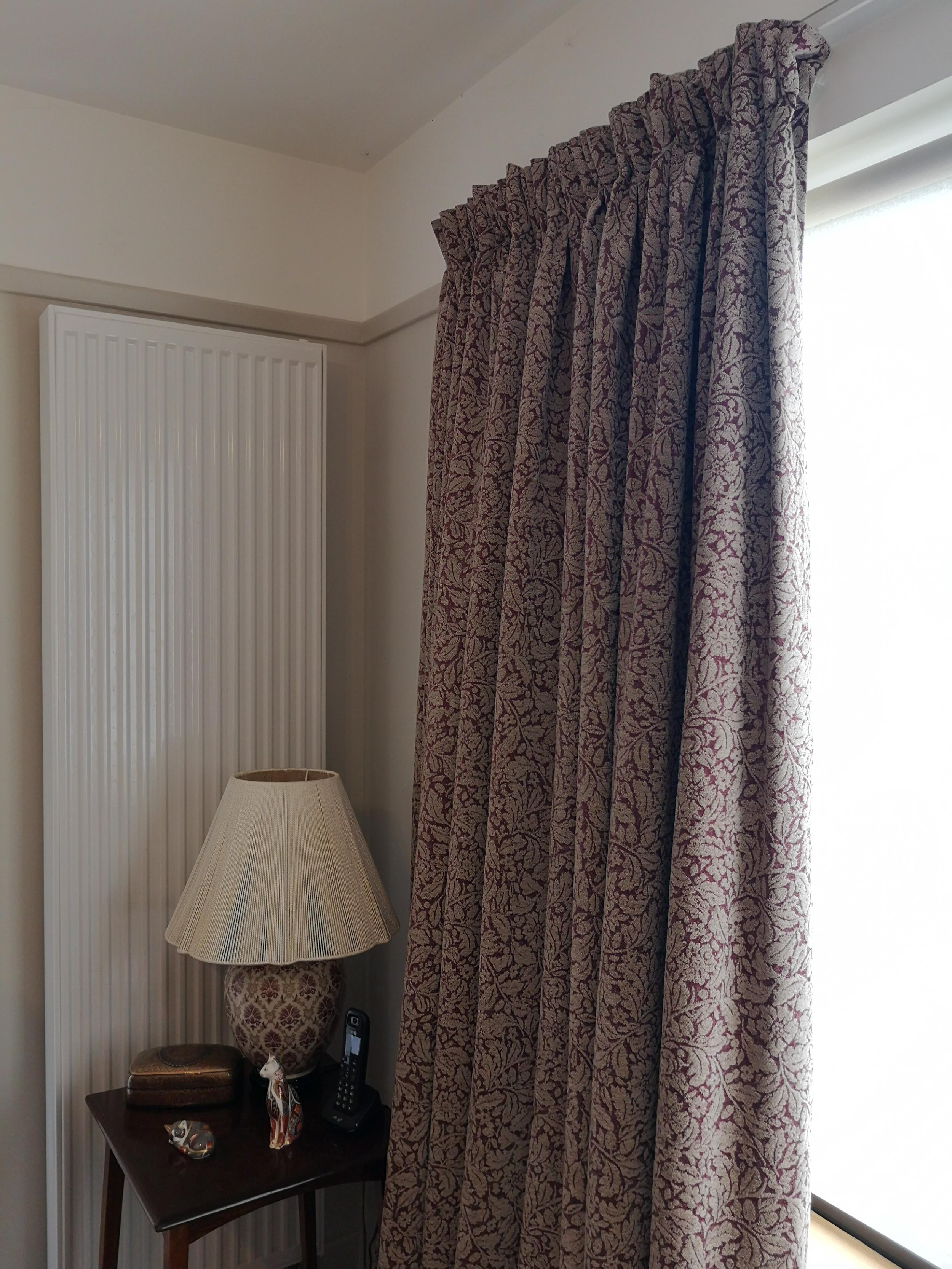
How do I choose the right fabric, colour and pattern for my curtains?
Fabric. Your chosen curtain material will affect two things: the amount of sunlight allowed into the room when closed, and the interior design look of the room.
Colour. Ideally, your curtain colour should match the room and other soft furnishings. Either choose something that matches the shade of the walls or contrasts with the furniture.
Pattern. Selecting the right pattern or design for your spaces is absolutely essential. Do you choose a solid colour, elaborate design or repetitive print? Repeating patterns work very well if the other furnishings are a solid colour. And vice versa. If the room is full of patterns, a solid complimentary colour is usually best.
Which types of lining are best for made-to-measure curtains?
Choosing the right lining for your curtain is just as important as picking the right fabrics, colours and designs. Not only does the lining affect light penetration, noise reduction and heat retention, linings also determine how your made-to-measure curtains hang, look and feel.
So what types of lining can you choose from?
Cotton Lining. A single layer of white or cream cotton can be used to line lightweight curtains. It will help curtains hang correctly, create a smart tailored look, but will only block out a minimal amount of light.
Blackout Lining. Prevents any light at all passing directly through the curtain (although not necessarily around the sides)
Thermal Lining. Helps retain heat and keep out the cold in the winter months. Also keeps room cooler in the summer months!
Interlining. Used to improve the drape of your curtain fabric, improve it’s thermal and light reduction properties, while also creating a fuller, more voluminous curtain.
After all of this, you wanted to give it a go and make yourself a pair of curtains, go to https://www.bbc.co.uk/programmes/p0181k35 to find out how from the BBC programme The Great British Sewing Bee!
Handmade Curtains in Suffolk with Emma Claire Interiors: Our Process
Creating custom curtains is both an art and a science. Here's a look at our process, from consultation to final installation:
Step 1: Consultation
Our journey begins with an initial consultation to understand your needs. Whether you're in Bungay or Beccles, we can visit your home or discuss your project virtually, taking into account window measurements, room decor, and design preferences.
Step 2: Choosing the Perfect Fabric and Style
Based on your needs, we’ll present a selection of fabrics and recommend styles that suit your space. If you’re unsure about colour or pattern, we can provide samples, helping you make the right choice for your home.
Step 3: Tailoring and Sewing
Once the design is finalised, Emma Claire Interiors can bring your vision to life. Each curtain is carefully tailored to fit your window perfectly, with attention to detail that ensures a stunning finish.
Step 4: Installation
After the curtains are complete, we offer professional installation to ensure the final product is exactly what you envisioned. Our team handles the setup, so you don’t have to worry about a thing.

